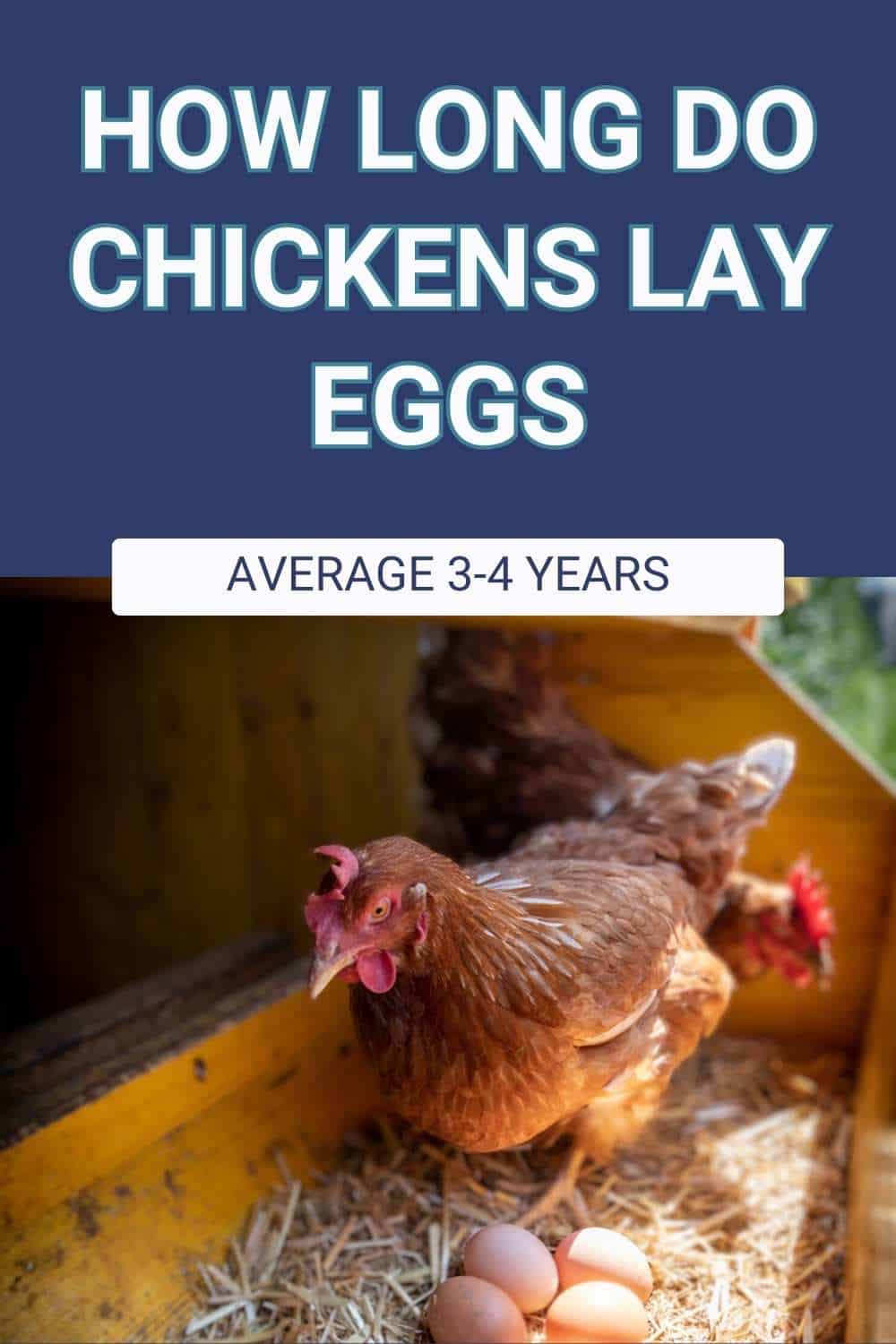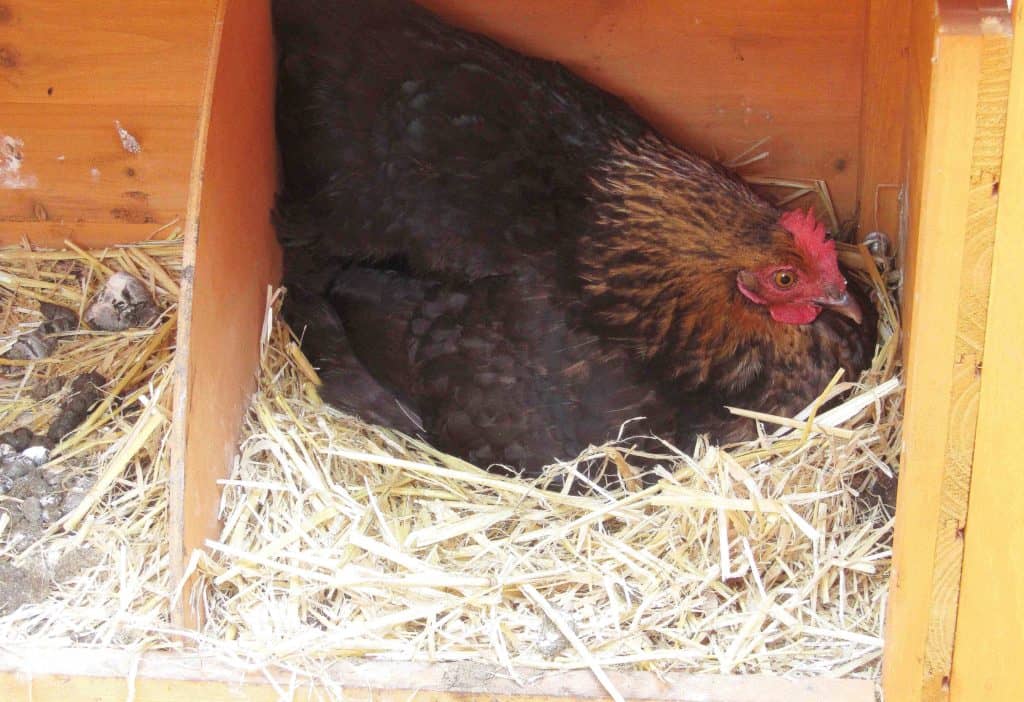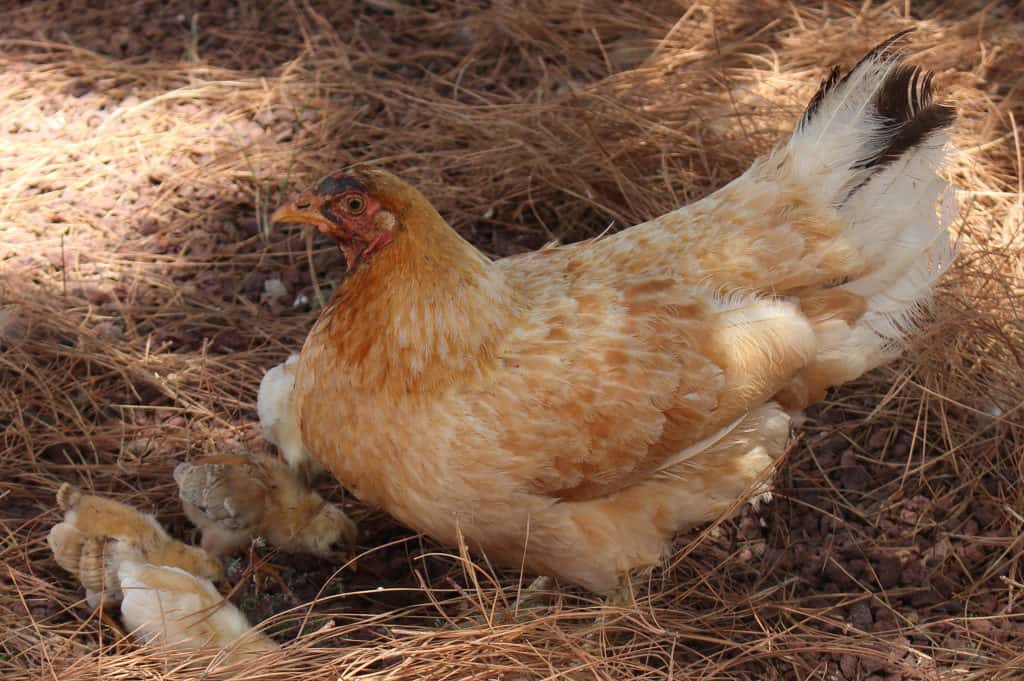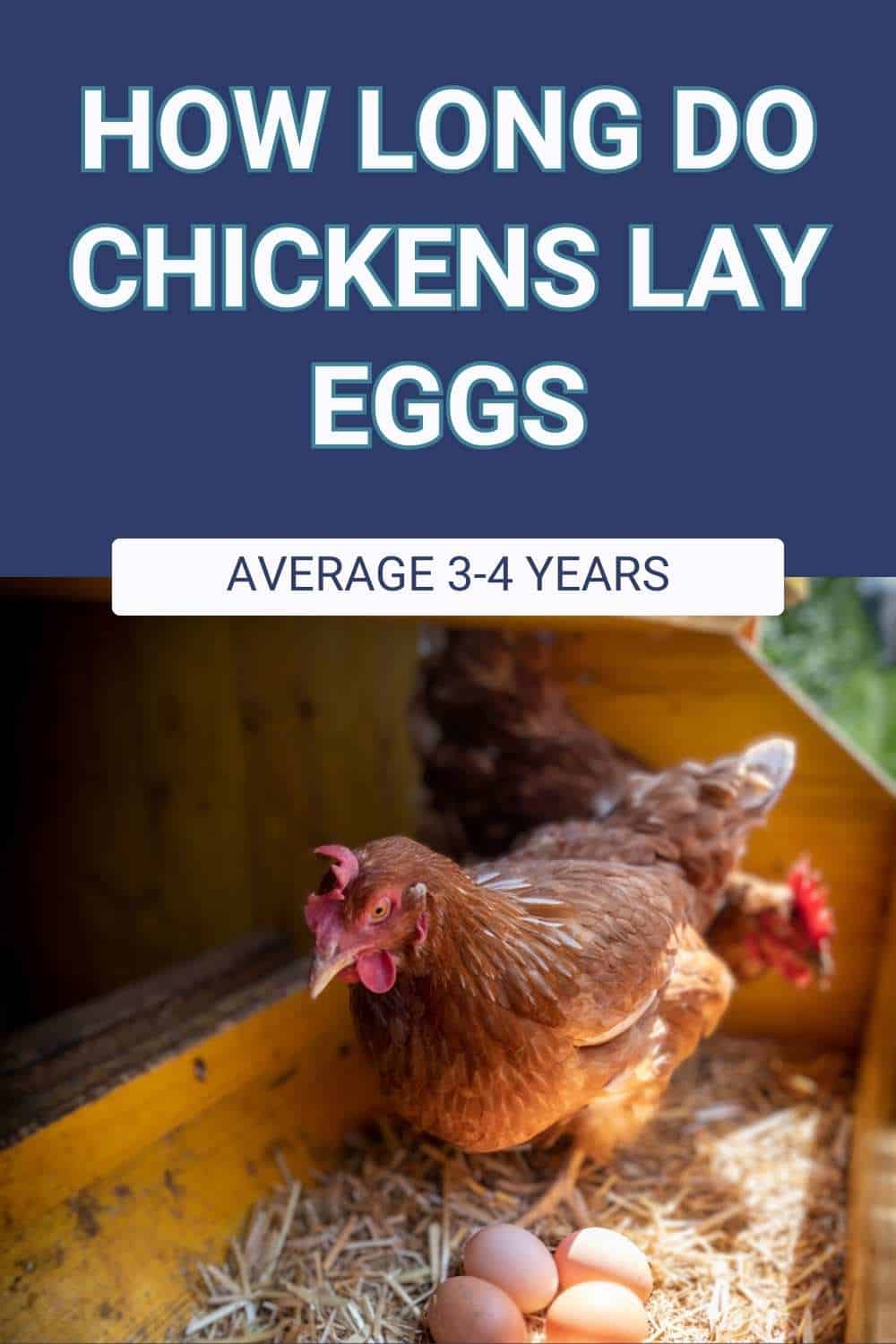The trend of producing one’s food has brought the farm into the city. One such area that has grown in recent years is the keeping of backyard chickens for fresh eggs. Once people have tasted just how much better “home-grown” eggs are, they never want to go back to plain old store eggs.
Like any keeping of livestock, though, people must plan so that they have a steady supply of eggs, as hens have a limited working life span. How long do chickens lay eggs?

Several factors affect the production of eggs by a hen:
- Breed – Varieties bred as layers will produce more consistently than meat varieties. Some varieties produce larger amounts for a shorter time, while others have a longer laying span with lower peak production.
- Age – Once mature, around five months of age, a hen will lay an egg roughly every 24 to 36 hours until she is around two or three years old, after which production tapers off.
- Rooster to Hen Ratio – Multiple roosters will vie for dominance, stressing the hens, and making them produce less.
- Housing – Hens kept in a safe area with adequate lighting and access to shelter will lay longer.
- Diet – A steady supply of eggs requires a proper, balanced diet to be consistently fed.
Choosing your Breed

In the above list, the age and breed of chicken are the top determiners of how long a hen will lay. Breed determines how long an individual chicken will produce. Large-scale producers typically use varieties that begin to lay eggs around 18 to 20 weeks of age.
The chickens produce large amounts of eggs for a year and a half or two before laying drops dramatically. Examples of this kind of chicken are Lohmann Brown, Black Star, and Freedom Ranger.
On the other hand, heritage breeds mature more slowly, beginning to lay at 20 weeks. These chickens produce fewer eggs, but they do so longer than production breeds. Thus they are a good choice for backyard egg production.
Varieties in this category include Rhode Island Red, Fayoumi, Barnevelder, and Barred Rock. These breeds lay consistently for 3 to 4 years on average, but Rhode Island Red chickens have been strong producers even at 5 or 6 years, with some still laying at 7 or 8 when living in optimal conditions.
Some breeds are known for particularly high disease resistance, which has a positive effect on their laying lifespan. Please note that there are variations in egg production among breeds in this category. Read up on average egg production for any breed that interests you so that you are not mistakenly disappointed by a low yield.
Put a lot of work into planning for your flock. If possible, buy chickens from different breeds and both categories to ensure that you have a steady supply of eggs as soon as possible and for as long as possible. Mix Black Star, for example, with Rhode Island Reds and Australorps so that you are not stuck waiting for a new shipment of chicks to mature and start laying eggs.
| Egg Laying Timeline | |||
| Category | Representative Breeds | Peak Duration (Years) | Total Productive (Years) |
| Short | Leghorn, Ancona, Hamburg | 1-2 | 2-3 |
| Medium | Rhode Island Red, Sussex, Plymouth Rock | 2-3 | 3-4 |
| Long | Australorp, Orpington, Wyandotte | 3+ | 4+ |
Provide a Comfortable Coop

A good chicken coop is necessary for chicken safety; after all, if a predator grabs one, it will not be laying for you. The predators also stress chickens, causing them to lay less.
This coop also makes gathering eggs much easier and is considered necessary for flightier breeds, such as Fayoumi, that would otherwise leave eggs in random spots in your yard for an unpleasant surprise later. There are many ways to build coops, but there are foundational features that you need to include for a productive flock:
- Enough space, 5-8 square feet per bird if fully confined
- Light to stimulate egg production, around 16 hours a day
- Insulation for cold weather, if needed
- Proper flooring that is easily washed, such as plywood covered with Tyvek
- Adequate ventilation to prevent ammonia buildup and its nasty consequences
- Nest boxes, which should have an opening of 10 by 10 inches and be easily accessible
- Roosting perches, so they can sleep safely
When you look at the comfort of your chickens in their coop, they will lay for years, going to the end of the range with ease.
Above all, make sure you keep the coop clean and in good repair. A clean, safe environment takes much stress from your chickens’ lives so that their energy is directed in a useful way, that is to say, egg laying.
Ensure that your chickens have as much space as possible to roam. After all, the term “cooped up” has negative connotations. If you have space, let your chickens run free during the day.
Some people who raise chickens in a more suburban or urban environment confine chickens to a fenced-in spot or use a chicken tractor or portable run so that they know where their chickens are at all times.
The recommended wire mesh size is a half-inch square, as that will keep out most predators, even smaller snakes. If desired, you can add roofing to keep your chickens out of the talon’s reach.
Chickens require food to make eggs, but what should it be? A laying diet needs large amounts of protein and calcium, much of which comes from commercial poultry pellets. These pellets have a grain and seed base and should comprise around 16 percent of the diet.
The rule of thumb is that four pounds of feed will be needed for one dozen eggs. The calcium comes from a supplemental source supplied separately. If your chickens have little room to peck and roam, it is particularly important to ensure their food has everything they need.
Even with free-range chickens, there are many things you can add to their diet to ensure a productive working life. Most fruit and vegetable scraps are a dandy way to get your birds more minerals.
The only forbidden ones are raw green peels, such as those from potatoes, and citrus fruits. Processed whole grains, such as pasta, are also part of a healthy diet. Make sure you use high-quality feed that, if possible, is organic, as certain hazardous chemicals have a negative effect on health and egg production.
Chickens also enjoy a treat now and then. Foods that are often used as such range from what you’d consider eating, like apples, broccoli, and pumpkin, to downright gross, like worms.
Feeding to lay strong

In general, your chicken can eat what you do, but there are exceptions. Never give anything fatty, sugary, or salty, such as highly processed snack foods. Rhubarb, avocado, and garlic are not good for them and should never be put in the feed trough. If you do, your bird will not lay eggs for long.
Food should be presented properly. Although the image of scattering grain on the ground is popular, it is not always a good way to feed chickens. If your chickens are confined for some reason, invest in a feeding trough to dispense their food.
In doing so, rather than simply scattering seed, you will not mix feed and droppings. This prevents nasty parasitic infections, such as coccidiosis, from starting, spreading, and eventually killing your chickens by malnutrition.
Chickens need a lot of water to produce eggs. Make sure that they have access to a steady supply of clean water. If neglected, you will have to wait around a week for them to begin laying again.
Protect hens
Hens will lay eggs without the presence of a rooster; one is needed certainly if you plan on breeding your hens. However, their presence can sometimes cause problems. Too many roosters increase the stress of the flock by their fights for dominance, stressing the chickens and decreasing the amount of eggs they lay.
The optimal ratio is one rooster per six to nine hens. If you keep around a single rooster for six to nine hens, he will warn the flock when predators come, giving them time to find cover. They will also take on predators occasionally, keeping your chickens from an untimely demise.
Summary
Many people enjoy chickens in their yard. The thought of enjoying fresh, tasty eggs makes the work worthwhile for many. How long do chickens lay eggs that owners can enjoy? In general, it is around two to three years before production tapers off.
However, by seeing the cleanliness and comfort of the chickens’ surroundings, you can make the most of those years and possibly extend them. Some breeds lay more than others, but a clean, low-stress environment will do any chicken good, regardless of age or breed.


Joseph Hudson has been raising chickens for over 15 years. In 2018, he completed the Agriculture & Natural Resources program at Mt. San Antonio College. He currently raises over 1400 chickens on his 7.5-hectare farm. He keeps sharing his experience on raising healthy and happy chickens on Chicken Scratch The Foundry.







